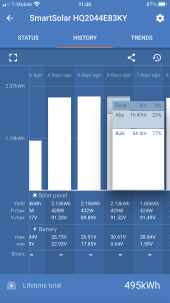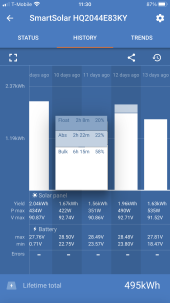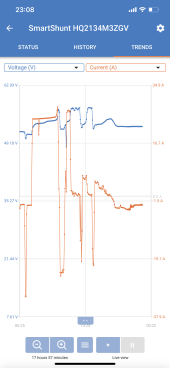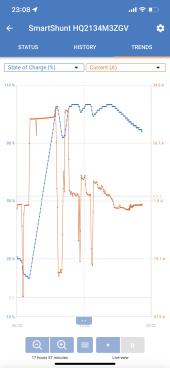jessicadavis
New Member
Hi everyone ~
I've been experiencing some trouble with my solar system shutting off in the evenings despite very few loads and lots of charging. Long story short, I got SOK on the line and they confidently suggested my batteries are out of balance and that I purchase Victron's battery balancer to remedy the issue.
According to the manual for the balancer:
In case of series-parallel connection, the midpoint interconnecting cables must be sized to at least carry the current that arises when one battery becomes open-circuited. -
In case of 2 parallel strings: cross section 50% of the series interconnecting cables.
I have 4 SOK 12v 100Ah batteries wired in 2S2P and I'm trying to figure out what the "current that arises when one battery becomes open-circuited" is in order to properly size the wires and fuses. Right now I'm thinking 16awg with 10A inline fuses. Can anyone verify this is all good with the batteries?
Also, would it be ok to only add inline fuses to the 24V & Common wires and leave the ground fuseless?
Thanks in advance
I've been experiencing some trouble with my solar system shutting off in the evenings despite very few loads and lots of charging. Long story short, I got SOK on the line and they confidently suggested my batteries are out of balance and that I purchase Victron's battery balancer to remedy the issue.
According to the manual for the balancer:
In case of series-parallel connection, the midpoint interconnecting cables must be sized to at least carry the current that arises when one battery becomes open-circuited. -
In case of 2 parallel strings: cross section 50% of the series interconnecting cables.
I have 4 SOK 12v 100Ah batteries wired in 2S2P and I'm trying to figure out what the "current that arises when one battery becomes open-circuited" is in order to properly size the wires and fuses. Right now I'm thinking 16awg with 10A inline fuses. Can anyone verify this is all good with the batteries?
Also, would it be ok to only add inline fuses to the 24V & Common wires and leave the ground fuseless?
Thanks in advance






